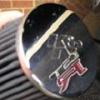Ceramic Stockies
Announcements
-
Similar Content
-
Latest Posts
-
Have you confirmed the 2 pin coolant temp sensor on the motor is working properly? I've had a very similar issue when I forgot to plug mine back in many years ago.
-
Ok interesting i guess ill wait till using a manual gauge before making assumptions.
-
Not in any way a logical conclusion. Also, looking at those logs, I struggle to see how that much oil pressure can go away that fast unless you are sucking air into the pickup. Meanwhile the ECU voltage is chucking a huge wobbly which seems to be tied to the throttle position. 100% throttle results in decreasing voltage. It's a mess.
-
So didn't get around to installing a manual oil pressure gauge and then decided to take the car for a cruisey drive to a cars and coffee and brought the laptop along with to get another log using more gears to see if its an oil pressure issue under acceleration or after. this log has 3 gears of WOT where as previous had 2 and the oil pressure dropped once on the brakes, and the same again happens here which is interesting as it shows it can hold oil pressure while under acceleration but once slowing or just the lower RPM after a pull pressure drops. I will be chucking a manual oil pressure gauge on to confirm but so far this makes me feel it is not an electrical issue. Something else i realised is the pressure sensor also is giving temperature information and the temp stays steady the whole time which makes me feel like the sensor itself is showing a true pressure reading.
-






Recommended Posts
Create an account or sign in to comment
You need to be a member in order to leave a comment
Create an account
Sign up for a new account in our community. It's easy!
Register a new accountSign in
Already have an account? Sign in here.
Sign In Now